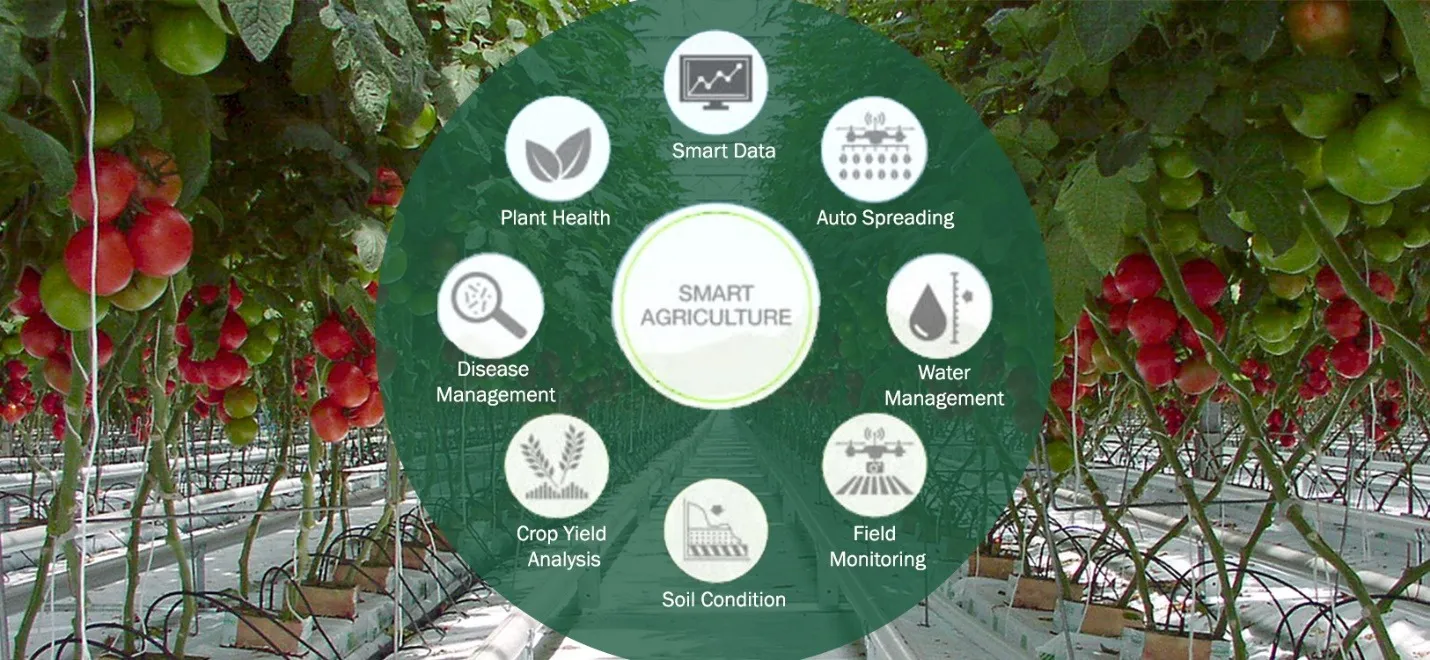Automation in Agriculture
To address labor shortages and enhance efficiency, the sector is increasingly adopting autonomous technologies. Innovations such as solar-powered irrigation systems and AI-driven farm management tools are becoming more prevalent. While large-scale crops like corn and soybeans have benefited from automation, challenges remain in automating tasks that require dexterity, such as berry picking. Farmers express concerns regarding the costs and effectiveness of these technologies compared to human labor, and there are apprehensions about the potential impact on farmworkers' employment and safety.
A growing number of companies are bringing automation to agriculture. It could ease the sector’s deepening labor shortage, help farmers manage costs, and protect workers from extreme heat. Automation could also improve yields by bringing greater accuracy to planting, harvesting, and farm management, potentially mitigating some of the challenges of growing food in an ever-warmer world.
But many small farmers and producers across the country aren’t convinced. Barriers to adoption go beyond steep price tags to questions about whether the tools can do the jobs nearly as well as the workers they’d replace. Some of those same workers wonder what this trend might mean for them, and whether machines will lead to exploitation
On some farms, driverless tractors churn through acres of corn, soybeans, lettuce and more. Such equipment is expensive, and requires mastering new tools, but row crops are fairly easy to automate. Harvesting small, non-uniform and easily damaged fruits like blackberries, or big citruses that take a bit of strength and dexterity to pull off a tree, would be much harder.
An automated system that communicates with a satellite to help keep the machine on track. But it can’t identify the moisture levels in the fields which can hamstring tools or cause the tractor to get stuck, and requires human oversight to work as it should
Technological Innovations
Companies like FarmLab are at the forefront of integrating technology into agriculture. Utilizing AI to measure soil carbon and employing satellite imagery for precision agriculture, these innovations aim to enhance productivity and sustainability. Such technologies are crucial for emissions reduction and represent a broader trend towards digitization in farming practices.
Smart farming also known as Farming 4.0 or farm automation is the application of data and information technologies to optimise the food quality and production processes of complex farming systems.
Smart farming does so using a range of technologies that help farmers monitor field conditions remotely, making it much easier for farmers to manage their fields and operations from one central place. These technologies include:The Internet of Things (IoT) / DronesRobotics/ Smart Farming Application
Automation plays a huge role in smart farming as the practice uses software and sensors to manage and monitor the farm’s processes. This helps farmers improve the quality of their products as well as the availability, lower their costs, and increase the customer experience. All while promoting efficient, high-quality, sustainable production regardless of the farm’s size or output.
- The IoT offers limitless possibilities for smart farming practices, enabling farmers to monitor their farm’s operations remotely through connected devices. This way, farmers can, for example, use their smartphones to monitor livestock and crop from their living room while simultaneously collecting valuable data and information that help them make more informed decisions.
- Many farms are using drones these days and with good reason. Not only can drones monitor crops by flying over the fields, but they also help farmers manage their farms in a more sustainable way. In fact, drones are even able to spot animals before the fieldwork begins, saving countless lives every year. Drones can easily carry out : Optimising farm security and surveillance / Aerial treatment for weeds pests, and crop diseases and Monitoring livestock, crops, and soil conditions.
Smart Farming Apps: Smart farming allows farmers to conveniently monitor and manage their crops and livestock from any type of device and from anywhere in the world. In order to do so, farmers are provided with specialised smart farming apps. Depending on the software, it is even possible to incorporate statistics in these apps, making it even easier for farmers to make intelligent decisions.To give an additional perspective to the usage of technologies in agriculture these days, a study by Bitkom shows that 80% of farmers in Germany are currently using digital technologies. Two technologies that really stood out during the study were intelligent feeding systems and GPS-controlled agricultural machinery.
Types of Automation in Agriculture
- Autonomous Tractors: Autonomous tractors work independently and can be controlled by the farmers remotely. Farmers merely need to set up the system and maintain the machines on a regular basis. As technology advances especially GPS, vision, and light detection technologies smart tractors will become more and more independent and profitable for farmers all around the world.
- Seeding and Weeding Robots : Seeding and weeding robots are used for planting purposes and they focus on a specific area of the field. These robots work with great precision and use artificial intelligence and computer vision to reduce pesticides in the field, thereby improving the quality of the food.
- Automated Irrigation Systems: An irrigation system assisted by robotics consists of special sensors as well as a Subsurface Drip Irrigation (SDI) system. SDI systems are not new to the agricultural industry. They help farmers control the amount of water that is being used and tell them at what exact time the plants ought to be watered.
Depending on the advancement of the sensors that are integrated into the irrigation system, they may require human assistance to some extent. However, with integrated IoT sensors, the system is able to monitor moisture levels by itself and send real-time data analytics to the farmer’s smart device(s). The RAPID (Robot-Assisted Precision Irrigation Delivery) is an example of such a system.
- Harvest Automation:.Harvest Automation merged with Tertill, the creator of a home weeding robot, expanding its product offerings and reinforcing its commitment to agricultural automation.
Sources: https://apnews.com/article/automation-tractors-robots-agriculture-labor-workforce-farming-df6087837925c14cfdd7ad2f80410a54
https://meilirobots.com/resources-list/smart-farming-guide#:~:text=Automated%20Irrigation%20Systems&text=An%20irrigation%20system%20assisted%20by,example%20of%20such%20a%20system.

